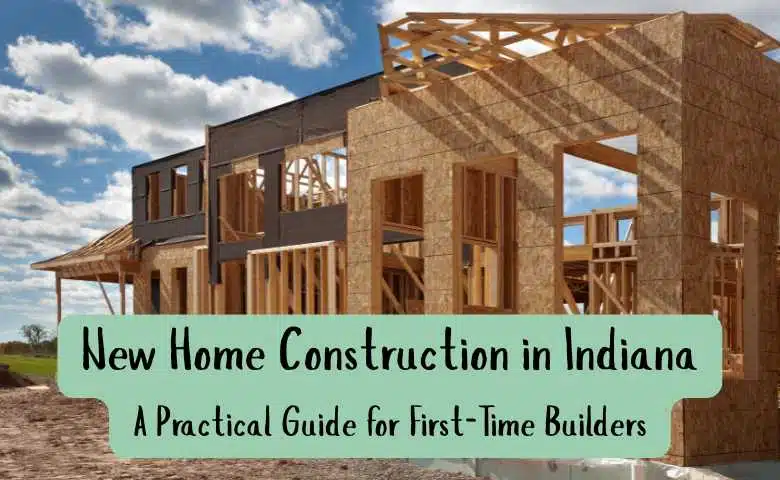Last Updated on October 11, 2025 by Admin
Building a new home is equal parts planning, sequencing, and quality control. In Indiana, especially around Terre Haute and Vigo County the climate, soil conditions, and permitting workflow shape how you design foundations, schedule trades, and budget for contingencies. This guide walks you from feasibility to final inspection with realistic steps, local context, and decisions that protect both comfort and resale value.
For local context and realistic timelines, talk with experienced new home builders in Terre Haute such as Patriot Property Pros who know the permitting, soils, and freeze–thaw details that shape a successful build.
Table of Contents
What “Ready to Build” Really Means
Before the first stake hits the ground, confirm two things: the lot can support your plan, and your plan fits the lot. That means zoning and setbacks, utility availability, driveway access, drainage, and any HOA rules. Pair your site assessment with financing that matches construction cash flow. Most owners choose a construction-to-perm loan so the build converts seamlessly to a fixed mortgage at completion.
In West-Central Indiana, a simple topo survey plus a soils review can save weeks later. Slight grading adjustments and a sensible foundation detail, like footing drains to daylight or a sump prevent damp basements and slab heave during freeze–thaw cycles.
Timeline & Milestones You Can Actually Count On
A typical single-family build runs six to nine months after permits, with two to four weeks up front for plans and approvals. The critical path is predictable: excavation and footings; foundation and waterproofing; framing and sheathing; rough-ins for HVAC, plumbing, and electrical; insulation and air sealing; drywall; finishes; and punch. Weather can compress or stretch those windows, so build slack into your schedule for inspections and back-ordered materials.
Inspections in Indiana generally hit footing, foundation, framing, rough-ins, insulation, and final. Treat each as a quality gate, not a formality. Passing cleanly keeps subs moving and protects your budget.
Design Choices That Pay Off in Indiana’s Climate
Comfort and efficiency flow from the envelope. Continuous water-resistive barriers, careful flashing at windows and roof-to-wall transitions, and well-sealed top plates curb air leaks. Pair a tight shell with right-sized HVAC and balanced returns. In bathrooms, use quiet exhaust fans with timers or humidity controls and terminate ducts outdoors, small details that keep relative humidity in check and mold out of your corners.
On structure, 2×6 exterior walls offer straighter framing and more insulation depth than 2×4. For roofs, add ice-and-water shield at eaves and valleys, use kick-out flashing where roofs meet siding, and maintain clearances at grade so siding and trim stay dry.
Budgeting Without Surprises
You’ll see pricing by square foot, but line items drive truth. Sitework flexes the most: trees, drive length, and utility taps can swing costs thousands. Foundations vary with soil and elevation. Framing and shell depend on plan complexity, window packages, and roof geometry. MEP rough-ins are stable if drawings are complete and change orders are limited. Finishes move with material choices and lead times.
Two rules hold in Vigo County as much as anywhere else: finalize specs before you break ground, and reserve a contingency. Five to ten percent is realistic. It cushions weather delays, trench rock, or a last-minute upgrade that’s genuinely worth it.
The Build, Step by Step (Owner’s View)
- Feasibility and Financing
Secure preapproval, confirm zoning, and draft a site plan that respects setbacks, utilities, and drainage. A quick conversation with the building department clarifies submittals and review timelines.
- Plans and Permits
Align architectural drawings with structural details and truss calcs. Submit a tidy package; incomplete plans are the easiest way to add weeks.
- Groundwork and Foundation
Excavate, set footings below local frost depth (often 30–36″ in Indiana), pour walls, waterproof, and install footing drains. Backfill only after inspection and proper cure.
- Framing and Weather-Tight Shell
Frame, set trusses, sheath, and install windows and doors. Flash sills with pan flashing or back dams, then WRB and cladding. Getting “dry” before rough-ins protects everything downstream.
- Rough-Ins: HVAC, Plumbing, Electrical
Run ducts tight and sealed, pressure-test water lines, and place nail plates at penetrations. Keep bath fan ducts short, insulated, and terminated outdoors.
- Insulation, Air Sealing, and Drywall
Air seal first, then insulate to code or better. Hang, tape, and finish drywall; prime to lock dust before trim and cabinets.
- Finishes and Exterior
Install flooring, cabinets, tops, doors, and trim. Outside, complete walks, drives, final grading, and downspout extensions to move water away from the foundation.
- Final Inspection and Closeout
Walk the punch list, verify attic insulation and ventilation, test mechanicals and GFCI/AFCI, collect manuals, and secure your certificate of occupancy.
Smart Upgrades That Add Value in West-Central Indiana
A higher-performance envelope and right-sized HVAC do more than lower bills, they make rooms feel consistent from wall to wall. Consider low-E windows with thoughtful orientation, continuous exterior insulation on tricky walls, and quiet bath fans with humidity sensors. In basements, add slab-edge insulation and a passive radon rough-in to future-proof the space. Outside, don’t skimp on roof flashings and kick-outs; they stop the hidden leaks that show up years later.
Common Pitfalls (and How to Avoid Them)
Change orders explode budgets when they hit structure or rough-ins. Lock selections early, especially long-lead items like windows, doors, and cabinets. Protect the schedule by keeping inspections grouped and clean. Insist on continuous site protection, mud control, floor protection, and covered material stacks to prevent rework after storms.
FAQ: First-Time Builder Questions, Answered
How long does a new build take in Terre Haute?
Six to nine months is common once permits are issued, plus a few weeks for planning and approvals.
Do I need a sump or perimeter drain?
Most basements benefit from footing drains to daylight or to a sump, paired with wall waterproofing and proper grading.
What insulation strategy works best here?
Air sealing plus code-minimum insulation meets most goals. If you finish the basement, slab-edge insulation and a continuous thermal break improve comfort.
How do I prepare the site for winter?
Stage materials under cover, protect excavations from rain, and schedule concrete pours within suitable temperature windows. Use heaters and blankets as needed per your contractor’s plan.
Closing Thought
A good new home in Indiana isn’t about extravagant finishes; it’s about thoughtful planning, a dry foundation, a tight shell, and clean sequencing. Get those right, and everything else from comfort to resale falls into place.
Related Posts
- Buying vs Building a House in 2025: A Comprehensive Guide for Your Dream Home
- Cummins Recruitment 2020 | Electronic Controls Engineer | Indiana
- The Ultimate Guide to Hiring Top Framing Contractors
- First Time Homeowners Moving In: 40 Essential Things You Shouldn’t Miss
- Understanding Roof Flashing Costs: Insights from Your Local Roofers


